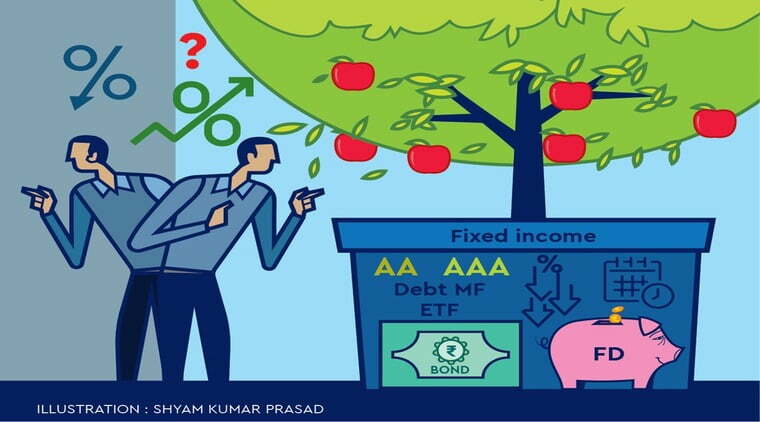Provided you stay invested in a debt fund for an adequate time horizon after rates and portfolio accrual have moved up, you reap the benefit.
The fixed income or debt component of the portfolio is more for stability of returns than superior returns. However, there is a ballpark expectation: to beat inflation; otherwise real returns are negative. That precisely is the situation now: portfolio yield-to-maturity (YTM) of debt mutual funds and interest rate of deposits of leading banks are on the lower side.
For some time now, real returns from fixed income investments are negative. And that is the challenge, all the more for senior citizens and risk-averse investors with debt-heavy portfolios. We have come to this situation as interest rates have been reduced significantly by the RBI, to support the pandemic-hit economy. Lower interest rates induce people to avail of loans, which propels the economy.
Credit risk
Is there any way out? No easy way. One possibility is taking higher credit risk; for example, exposure to debt funds with relatively lower rated portfolio or deposits of banks or companies that are not leading or top rated. Not to say these would default; banks and NBFCs have capital adequacy and AA, though less than AAA, is high investment grade. However, the decision has to be taken after proper understanding of what you are getting into and the consequent risk aspects. The other perspective is, credit risk will add only so much to your returns, say 1% or 2%, depending on the underlying. As against this, the equity component can generate a higher alpha (excess returns over base level). As long as there is appetite for the risk and adequate time horizon, a judicious allocation can be done.
Given this backdrop, what is expected in the coming year? It is expected that the RBI will normalise (read increase) interest rates. Is that going to make things better for fixed income investors next year? That has to be understood in context. There is a difference between contractual or defined returns, e.g. bank deposits or corporate deposits or small savings on one hand and market-oriented investments like debt mutual funds on the other hand.
Interest movement
In a fixed deposit, your returns are locked in till maturity, whatever happens to interest rates in the interim is not relevant. Notionally, after you book your deposit, if rates come down it is good that you are locked in a higher rate, and if rates move up, it is an opportunity loss. As against this, debt mutual funds move along with the market. However, since bond yields (read interest rates) and bond prices move inversely, when rates are moving up, the impact on your returns is apparently adverse.
To be noted, if you redeem your debt funds when interest rates are moving up and returns are muted, you are making it real. After rates have moved up, the accrual level of the fund portfolio, for which the portfolio YTM is a ballpark indication, moves up to that extent. Provided you stay invested in the fund for an adequate time horizon after rates and portfolio accrual has moved up, you reap the benefit.
Initially, we talked about real returns. It is desirable to get real positive returns on your fixed income investments. However, you need not get worked up on this. Inflation is not in your control. Your action and your portfolio are, so focus on that. The measurement of inflation, CPI or WPI, is on a generic basket across the country. However, everyone’s basket of consumption is different, for which there is no measurement. Your portfolio should be constructed as per your objectives and suitability.
Conclusion
In debt mutual funds, returns next year also will be muted, as returns move with the market and when interest rates are moving up, returns are impacted in that phase. Subsequently, you should remain invested in the fund(s) to get the benefit. In contractual return deposits, as in bank deposits, as and when rates move up, you can book incremental money or recycle earlier deposits running at lower rates, provided there is no premature withdrawal penalty.
Source: https://www.financialexpress.com/money/looking-back-looking-ahead-fixed-income-challenge-of-low-returns-in-fixed-income/2388361/


